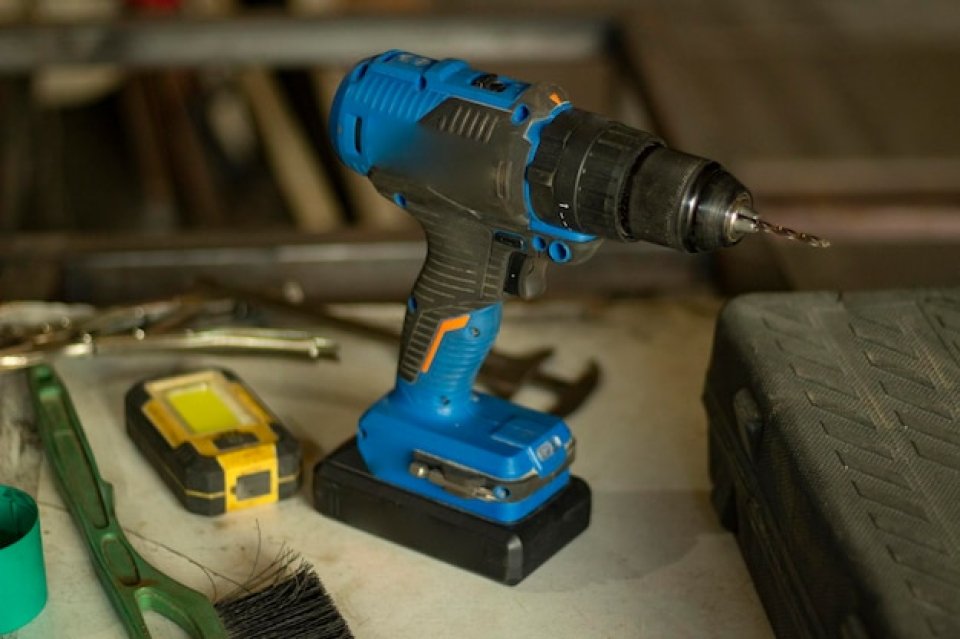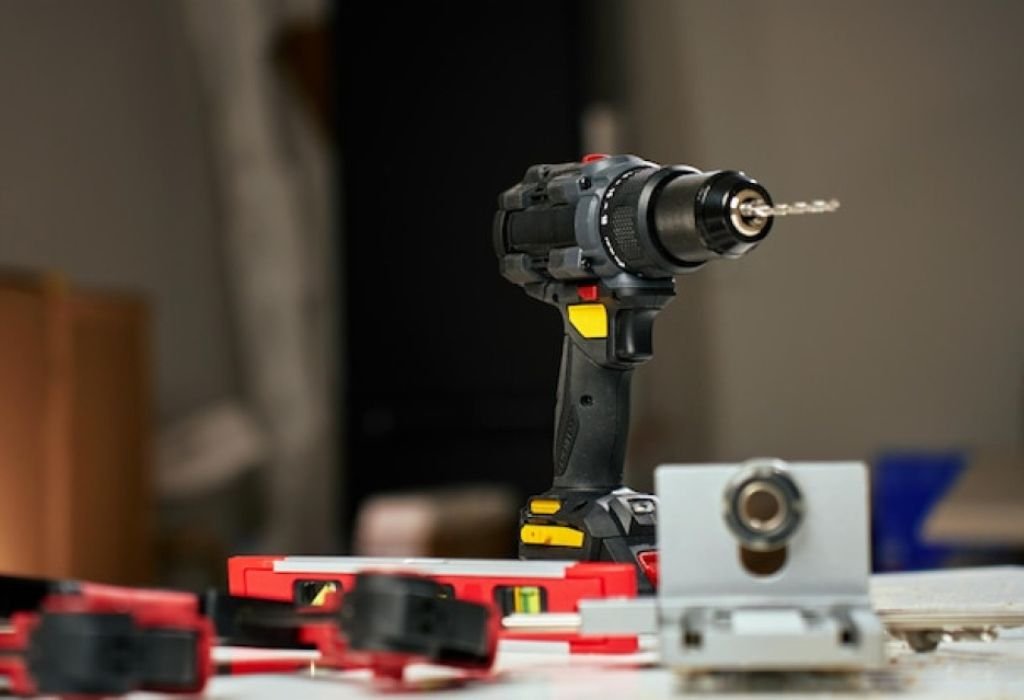A mechanic reaches for an impact driver to remove a rusted lug nut, only to find the fastener won’t budge. Minutes later, an impact wrench breaks it loose with ease.
This common scenario sparks a key question: what is impact wrench vs impact driver, and when should each be used?
At first glance, both tools look similar, producing rapid bursts of rotational force through a hammer-and-anvil mechanism. Yet their design and performance differ greatly.
An impact driver features a 1/4-inch hex chuck for quick-change bits, delivering high speed and impacts per minute (IPM) that make it perfect for driving screws, deck fasteners, and small bolts.
By contrast, an impact wrench uses a square drive, usually 3/8-inch or 1/2-inch, to fit sockets and deliver torque levels exceeding 250–1,000+ ft-lb, enough to handle lug nuts and heavy machinery (Milwaukee Tool).
The distinction matters because using the wrong tool can cause stripped fasteners, wasted time, or even injuries.
For example, attempting to remove automotive bolts with an impact driver risks damaging both the bit and the fastener head. Conversely, using a bulky impact wrench for cabinet screws would be inefficient and hard to control.
According to industry surveys, cordless impact drivers remain among the top five tools purchased by both contractors and DIY users, while mid-torque impact wrenches are increasingly favored in home garages (Pro Tool Reviews).
Quick Answer — What Is Impact Wrench vs Impact Driver?
Impact drivers and impact wrenches look similar but serve different roles. Both use rapid rotational impacts to apply force, but their drive interfaces and torque levels make them unique.
An impact driver has a 1/4-inch hex quick-change chuck. It prioritizes speed, high RPM, and high IPM, making it excellent for screws, deck fasteners, and small lag bolts.
An impact wrench has a 3/8-inch or 1/2-inch square drive. It delivers far greater torque, capable of removing lug nuts and heavy bolts that drivers cannot handle.
Which one is better for lug nuts?
Impact wrench, due to its high torque output.
Can you use sockets with an impact driver?
Yes, but only with an adapter, and torque may be insufficient.
Which tool is smaller?
Impact driver, which is lighter and more compact.
Which has more torque?
Impact wrench, often exceeding 1,000 ft-lb.
Are they interchangeable?
Not fully—drivers excel at screws, wrenches at bolts.
How the Mechanisms Differ (Hammer, Anvil, Drive Interfaces)

Both tools rely on a hammer-and-anvil mechanism, but their construction determines performance. Drivers emphasize speed, while wrenches emphasize raw torque.
In an impact driver, the hammer strikes rapidly with lighter force, resulting in higher impacts per minute but less torque. This makes them effective for wood screws and small fasteners.
In an impact wrench, the hammer mass and gearing are larger, producing fewer but stronger impacts. This allows the wrench to break loose rusted or tightened bolts with ease.
Why does a wrench hit harder?
It has a heavier hammer and stronger gearing.
Does a driver vibrate more?
Yes, it cycles impacts faster, creating chatter.
Is a hammer drill the same?
No, hammer drills impact axially, not rotationally.
Can either strip threads?
Yes, misuse can damage threads.
Do brushless motors matter?
Yes, they improve efficiency and control.
Drives and Chucks — 1/4″ Hex vs 3/8″ & 1/2″ Square
The biggest visible difference is the chuck or drive interface. This determines what accessories each tool can use.
An impact driver features a 1/4-inch hex collet that accepts hex-shank bits. It enables quick changes and works best with screws, nutsetters, and drill bits.
An impact wrench uses a square drive, usually 3/8-inch or 1/2-inch, for impact sockets. This connection handles higher torque and prevents slipping.
Can a wrench drive screws?
Yes, but it’s overpowered for small fasteners.
Can a driver remove caliper bolts?
Sometimes, but torque may be too low.
Do you need impact-rated accessories?
Yes, to avoid breakage and injuries.
Are adapters safe?
Yes, but only if they are impact-rated.
Do adapters reduce torque?
Slightly, and they may wear faster.
Power & Performance — Torque, IPM, RPM
Performance specs reveal why each tool has a niche. Wrenches win in torque, while drivers excel in speed.
An impact wrench delivers 250–1,000+ ft-lb, enough to break free lug nuts, axle bolts, and machinery fasteners. Mid-torque models cover most automotive needs.
An impact driver produces lower torque but achieves very high IPM and RPM, allowing screws and lags to sink fast without wrist strain.
What matters most for screws?
IPM and RPM.
What matters most for bolts?
Torque and breakaway force.
Why list “nut-busting” torque?
It measures peak loosening strength.
Does voltage equal power?
No, torque ratings matter more.
Will a driver remove lug nuts?
Usually not—use a wrench instead.
Best Use Cases — Automotive vs Carpentry vs DIY
Choosing the right tool depends on the application. Misuse leads to frustration and damaged fasteners.
An impact wrench is the go-to for automotive tasks, mower blades, suspension, and industrial machinery. Its torque makes short work of tough bolts.
An impact driver dominates carpentry, cabinetry, decking, and framing. Its lightweight design and speed make it the most efficient screw-driving tool.
Home garage tire swaps?
Impact wrench is best.
Building a deck?
Impact driver with long bits.
Metal roofing screws?
Impact driver with hex-head bits.
Farm equipment repairs?
Impact wrench with impact sockets.
One-tool compromise?
Driver for wood; rent a wrench for heavy bolts.
Accessories & Consumables — Bits, Sockets, Adapters

Accessories determine safety and efficiency. The wrong choice can lead to tool or fastener failure.
Impact drivers use impact-rated bits with torsion zones, nutsetters, and drill bits. These absorb impacts and last longer under stress.
Impact wrenches require impact-rated sockets made from chromoly steel with thicker walls. Never use chrome sockets, as they can shatter.
Hex-shank drill bits in drivers?
Yes, for light drilling.
Thin-wall sockets for wheels?
Yes, impact-rated thin walls protect rims.
Adapter use?
Only impact-rated adapters are safe.
Why do bits break?
Using non-impact bits.
Stripped heads fix?
Use correct fit and slower speeds.
Ergonomics, Size, Noise, and Safety
Comfort and safety differ between these tools. Drivers win on portability, while wrenches require more control.
An impact driver is smaller, lighter, and quieter, making it easier for overhead or extended use.
An impact wrench is bulkier and louder, requiring more arm support and proper PPE for long use.
Do they replace torque wrenches?
No, always verify torque specs manually.
Are they safe on wood?
Yes, but use lower settings.
Why do they chatter?
It’s the hammer-anvil mechanism.
How to prevent wrist strain?
Maintain a neutral grip and let the tool work.
Should sockets be oiled?
Keep clean and dry; lightly oil the detent.
Cordless vs Pneumatic Platforms
Both tools come in cordless and pneumatic versions. The choice depends on the work environment.
Cordless tools are portable, with brushless motors and smart assist modes. They dominate in DIY and jobsite use.
Pneumatic tools excel in professional shops where air compressors provide continuous high power.
Which is best for home use?
Cordless, due to convenience.
Which shines in body shops?
Pneumatic, with steady airflow.
Cold weather issues?
Cordless batteries need warmth.
Are air drivers common?
Less so—cordless dominates.
Should brands be mixed?
Stick to one battery platform.
Buying Guide — Specs That Matter
When shopping, specs reveal whether the tool meets your needs.
For impact drivers, look at IPM, RPM, brushless motors, quick-change chucks, assist modes, and ergonomics.
For impact wrenches, compare torque ratings, drive size, detent type, weight, and speed settings. Always budget for accessories.
3/8″ vs 1/2″ wrench?
3/8″ for light bolts; 1/2″ for wheels.
Max torque vs breakaway torque?
Breakaway for removal, max for tightening.
Friction ring vs pin detent?
Friction ring swaps faster; pin detent secures better.
Compact vs mid-torque?
Compact for space, mid for power.
Essential driver feature?
A reliable quick-change chuck.
Cost of Ownership
Costs go beyond the bare tool. Accessories and batteries add up.
Drivers need bit sets, while wrenches need socket kits. Batteries and chargers are long-term investments, so pick a strong platform.
Starter budget?
Driver kit + impact bits, or wrench kit + sockets.
Do cheap accessories fail faster?
Yes, always use impact-rated.
One battery enough?
Two is better for zero downtime.
Warranty importance?
Yes, for both tools and batteries.
Can brands mix accessories?
Yes, if impact-rated and size-compatible.
Common Mistakes and How to Avoid Them

Many users make simple mistakes that shorten tool life.
Using chrome sockets on wrenches is dangerous. Not seating hex bits properly in drivers leads to stripping. Ignoring PPE risks injury.
Why did my socket shatter?
It wasn’t impact-rated.
Why do bits pop out?
Collet wear or poor seating.
Why strip screw heads?
Wrong bit or too much speed.
Why does my wrench stall?
The fastener exceeds its rating.
How to protect wheels?
Use impact-rated thin-wall sockets.
Future Trends
Cordless tools are evolving with smarter features and longer-lasting batteries.
Auto-stop modes, torque controls, and connected diagnostics are becoming standard. Accessories also continue to improve in strength and durability.
Will drivers replace wrenches?
No, each has its role.
Are tools getting quieter?
Slightly, but impacts stay noisy.
Will adapters make them interchangeable?
Not fully—torque limits remain.
Are brushless motors standard?
Increasingly, yes.
Is battery lock-in worth it?
Yes, if the ecosystem is wide.
Conclusion
So, what is impact wrench vs impact driver? Both share impact mechanics but serve different purposes.
The impact driver dominates in woodworking, cabinetry, and fast screw driving. The impact wrench is essential for automotive, construction, and machinery repair.
Rule of thumb: screws and small fasteners → impact driver; bolts and lug nuts → impact wrench.
For efficiency, safety, and long-term value, choose based on your projects and always use impact-rated accessories.

I’m John F. Nicholas, the founder, lead writer, and drill enthusiast behind 101drill.com. With years of hands-on experience in power tools and DIY projects, I created this platform to share practical knowledge, expert tips, and real-world insights to help others master the art of drilling.
